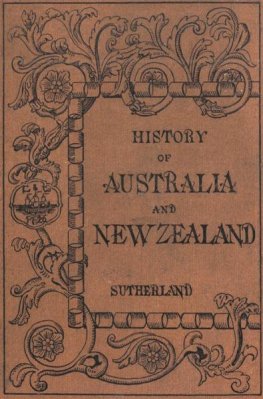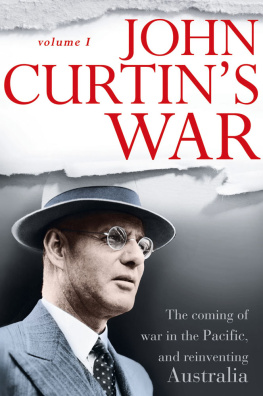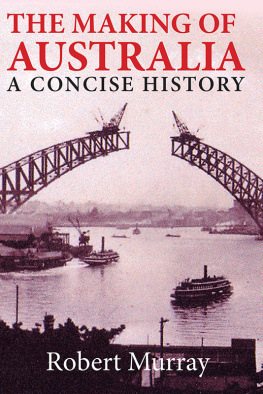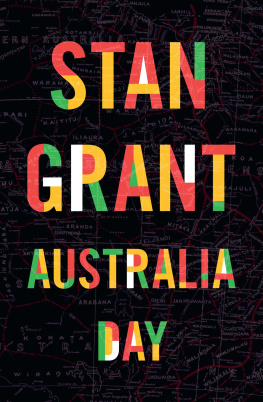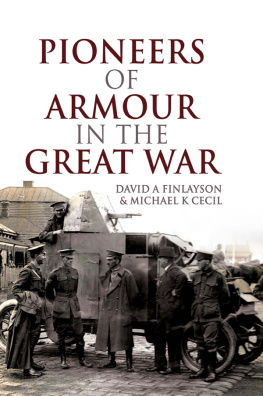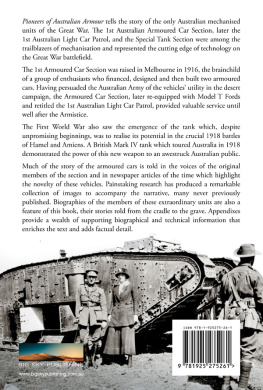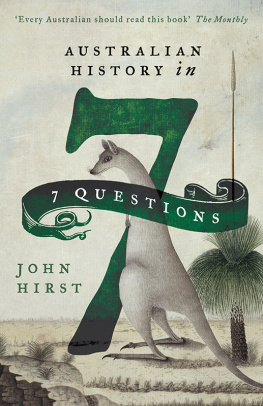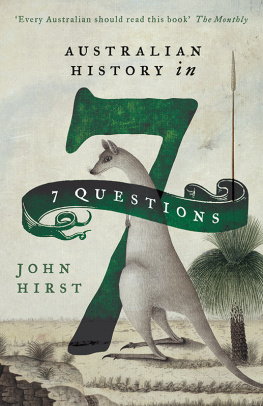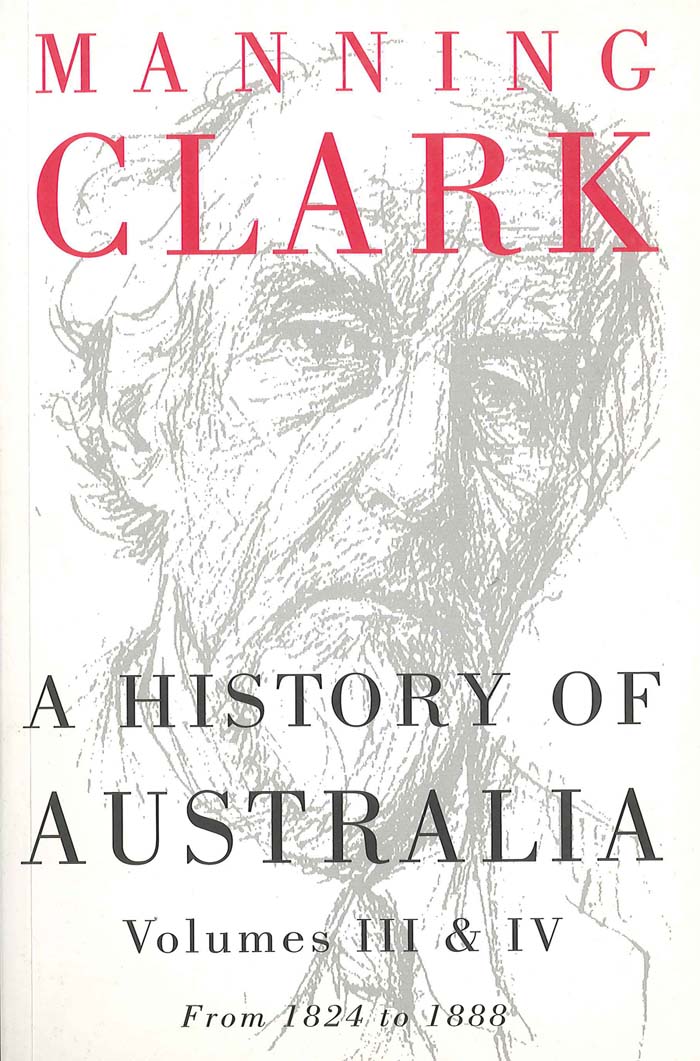A HISTORY OF AUSTRALIA
VOLUME III
BY THE SAME AUTHOR
Select Documents in Australian History, 1788-1850
Settlers and Convicts: or recollections of sixteen years labour in the Australian backwoods by An Emigrant Mechanic (ed.)
Select Documents in Australian History, 1851-1900
Sources of Australian History
Meeting Soviet Man
A History of Australia I: from the earliest times to the age of Macquarie
A History of Australia II: New South Wales and Van Diemens Land 1822-1838
A Short History of Australia
A Short History of Australia, 2nd revised edition, New York
Disquiet and Other Stories
In Search of Henry Lawson
A History of Australia IV: the earth abideth for ever 1851-1888
A History of Australia V: the people make laws 1888-1915
Collected Short Stories
A History of Australia VI: the old dead tree and the young tree green 1916-1935
TWO AUSTRALIANS
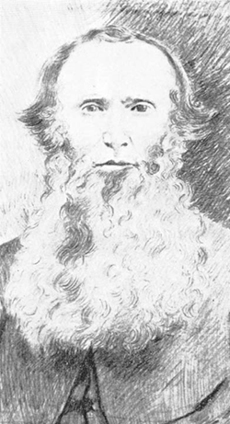
Charles Harpur
Partrait by an unknown artist, Mitchell Library, Sydney

Jackey Jackey
Drawing by Charles Rodius, Mitchell Library, Sydney
C. M. H. CLARK
A HISTORY OF AUSTRALIA
III
THE BEGINNING OF AN
AUSTRALIAN CIVILIZATION
1824-1851

First published 1973
Reprinted 1978, 1980, 1985, 1991
First paperback edition 1979
Printed in Australia by
Brown Prior Anderson Pty Ltd, Burwood, Victoria, for
Melbourne University Press, Carlton, Victoria 3053
U.S.A. and Canada: International Specialized Book Services, Inc.,
5602 N.E. Hassalo Street, Portland, Oregon 97213-3640
This book is copyright. Apart from any fair dealing for the purposes of private study, research, criticism or review, as permitted under the Copyright Act, no part may be reproduced by any process without written permission. Enquiries should be made to the publisher.
Charles Manning Hope Clark 1973
National Library of Australia Cataloguing-in-Publication entry
Clark, Manning, 1915-1991.
A history of Australia. III. The beginning of an Australian civilization 1824-1851.
Includes index.
ISBN 0 522 84054 X.
ISBN 0 522 84154 6 (pbk.).
ISBN 0 522 84235 6 (set).
ISBN 0 522 84314 X (pbk. set).
I. AustraliaHistory. 2. AustraliaHistory1788-1851. I. Title.
II. Title: The beginnings of an Australian civilization 1824-1851.
For
my two friends
Don Baker and David Campbell
The mighty Bush with iron rails
Is tethered to the world.
Henry Lawson, The Roaring Days
... its not only the things that weve inherited from our fathers and mothers that live on in us, but all sorts of old dead ideas and old dead beliefs... there must be ghosts all over the countryas countless as grains of sand. And we are, all of us, so pitifully afraid of the light.
Mrs Alving in H. Ibsen, Ghosts, Act 2
PREFACE
T HIS VOLUME attempts to tell the story of how we began to acquire an identity and a conscience. It attempts to show how the experience of planting a civilization in a harsh and uncouth land caused men to doubt whether God or man ever could make their life different from the one they knew. It attempts to show how men who grew up in barbarism and solitude developed their own comforters of mateship and sardonic humour. It also tells how in the struggle over free institutions and the use of convicts, the bourgeoisie won a victory not only over squatterdom, but a victory for British philistines over bush barbarians, and a victory for the survival of the British connection and influence against those who wanted a republic for the people of Australia.
The material for this volume was collected in London, Edinburgh, Cambridge, Dublin, and in the public libraries of Australia. Perhaps I may be permitted to say that visits to the sites of where those ghosts in our past first appeared were often more rewarding than anxious hours poring over books, newspapers, manuscripts and archival material. After the year 1842 the story of Australia is not presented as that of the history of four separate colonies, but of Australia as a whole. I can only hope that starting it so early has not unduly suppressed the idiosyncratic features in the histories of the various colonies. My debt is especially great to the National, the Mitchell and LaTrobe Libraries and the State Archives of Tasmania.
It was my good fortune to have the help of three excellent research assistantsDeidre Morris, Susan Eade and Beverley Hooper. Pat Romans typed a difficult manuscript with great skill and Paddy Maughan was just as efficient with the footnotes. Many gave generously of what they had or what they knew. Three students in PerthColin Pols, Ros and Bill Lenskygave up their time to show me Albany and Cape Leeuwin. In 1953 when she was bearing in her breast starry thoughts that threw a magic light on part of our past, Margaret Kiddle gave me a copy of the letters of Niel Black and the letters of J. D. Lang to the British Banner. Neither of us knew then what vision was locked inside the other.
I would like to thank the ones who did not indulge in what Coleridge called the head-dimming, heart-damping principle but who gave the encouragement and the strength to endure to the end. I am thinking of all those men and women to whom I owe a debt no man can repayKeith Hancock, Don Baker, David Campbell, Lyndall Ryan, Glen Tomasetti, Alec Hope, Ian Turner, Patrick White, Michael and Margot Roe, Bede Nairn, John Ryan, James McAuley, Kathleen Fitzpatrick, Malcolm and Mary McRae, Bruce Grant, Ken Inglis, Alison Clark, Geoffrey Serle, Geoffrey Stilwell, Douglas Stewart, Judah Waten, Shirley Bradley, Macmahon Ball, Mick Williams, Geoffrey Fairbairn, John and Max Crawford, Geoffrey Dutton, John Legge, Arch and Nancy Gray, Hope Ingamells, Robert Hope, John Molony, and Fin and Helen Crisp.
On my wifes help, words are all too inadequate. She was given that gift of tongues which smoothed some of the rough passages in the manuscript. She was given other things, without which these three volumes would never have appeared. Then there are the six children who had to put up with the experience of living close to someone mad enough to try to write a history of Australia. There were also the students whom it was my great privilege to teach. Through those golden three years in Melbourne after the war, and the twenty-three years here in Canberra they were the ones who made me feel that one should go on trying to tell that story of why we are as we are.
It was also my good fortune in Canberra to be taught by students whom I was supposed to be teaching. They all went on to publish valuable books on aspects of the period covered in this volume. I am thinking of Ruth Knights Illiberal Liberal, Michael Roes Quest for Authority in Eastern Australia, John Molonys The Roman Mould of the Australian Catholic Church, John Barretts That Better Country, and Tim Suttors Hierarchy and Democracy in Australia. Who could possibly write on this period without acknowledging their debt to Marnie Bassett on the Hentys, to Alexandra Hasluck and Frank Crowley on Western Australia, to John West and Kathleen Fitzpatrick on Tasmania, and Paul Hasluck and Eddie Foxcroft on the history of the aborigines? Like all other general historians, I found much food for thought and much to be grateful for in the works on South Australia by Grenfell Price and Douglas Pike.


